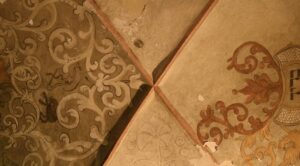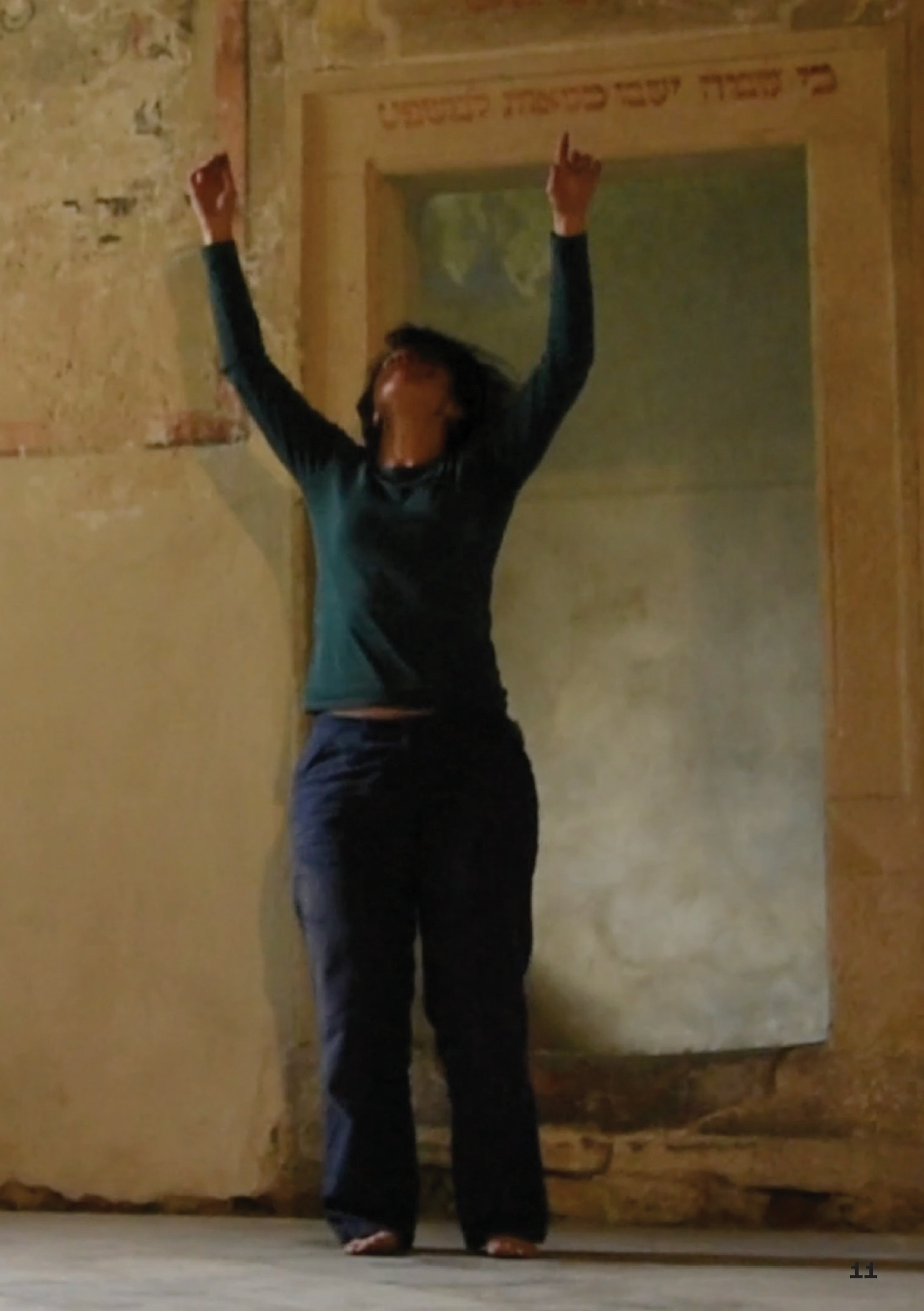Ben Spatz’ Postmemory in the North, is being exhibited at Holocaust Centre North as part of Cultures of Place 2022.

Follow the Voice, Pińczów Synangogue.
Come in to see Ben’s work before the exhibition close on the 19th! We are open Monday – Thursday (10am – 5pm) this week.
Interview with Ben Spatz and Paula Kolar:
Paula: Hi Ben, can you tell me a little about yourself and this project?
Ben: I’m from the US, from the Boston area and New York. And I grew up with quite a lot of Holocaust memory, present in my family and education, and it was quite significant for me. But I didn’t do anything professionally with it- I went into theatre and dance, experimental theatre and dance performance, and I’m really interested in embodied practice, embodied knowledge.
About 10 years ago, I felt like I needed to shift my artistic work towards more dealing with cultural politics and identity, so I started to work on Jewish identity politics specifically. And figuring out what on earth Jewish identity might be today. At that time I wasn’t really working with video, but I started to in 2017 when I got funding from the UK. I moved here 8 years ago to work here and I got funding to do a lab project – Artistic Research or Practice Research. I worked with two people who I hired, Eda Erçin and Agnieszka Mendel, and the three of us worked together full-time for 6 months. So it was a full-time, 6 month, very small artistic research lab.
It totally changed my understanding of artistic practice, possibilities of video, ways of collaborating, ways of thinking about cultural politics and identity through embodied practice, through video… Since then, I’ve been looking for ways to share the work a little bit more – How can I make it not just me over there in the corner thinking about the politics of Jewish identity? How can I share it more broadly?

But also, specifically, what is this video material?
Because during this lab, we made a lot of videos. We probably recorded about 500 hours of video. Of very different video and also different places. And it’s really, really interesting material. But also it’s not like filmmaking material- it was never done with a kind of idea in mind… How can we edit-? It was just research material.
Paula: The framing of it, it wasn’t at all there yet?
Ben: It was framed as basic research into Jewish identity through songwork. But that is very general, very open. Since then I’ve been exploring: How does this get framed more specifically? What discoveries or conclusions came out of this process?
First, I published several peer reviewed video articles. I thought: ‘Okay, I think this video material could be an academic research article. Because if we are talking about artistic research, practice research, video publications can be a part of that. So that was the first thing. That was the first level of thinking. Putting text onto video. And then the editing of course. But then I’ve also been thinking about video art, contemporary art video and I’m thinking about other fields that work with video graphic scholarship.
And meanwhile, I discovered that this [Holocaust Centre North] is here.
Paula: The artistic research lab was that here at Huddersfield.
Ben: Yes
Paula: That’s incredible! I’ve recently come across the Methods Lab at Goldsmiths.
Ben: Oh yes.
Paula: They do a lot of, I love that there’s a lot of experimental, experiential, ethnographic work – it’s basically exploring and expanding on ethnographic practices that they are doing.
Ben: Yes, so this very much that! Developing new kinds of methods for artistic research. Most of the Judaica Project video archive was not about the Holocaust, and it’s also about not Jewish identity alone. It’s about identity: thinking through Jewish identity towards other identities. The politics of identity, the politics of embodiment, these kinds of things.
But we did spend one week, taking our lab- we started traveling and it was amazing. Because you know, as theatre practitioners of course you can tour and perform in different places, but when you’re making video in an experimental way it’s totally different, because the place comes through on the video. You’re not trying to take your piece and put it in an empty space, you’re actually- it became a kind of research on place – So, we could do our practice, our lab practice here and see what happens and then we’d do it here and see what happens, and actually what was emerging was something about places.

So one of the team members, Agnieszka said: ‘We need to go to these old Synagogues in rural Poland.’ We went to these synagogues, some of which are total ruins, they’re not restored at all, they’re — some of them were open to the sky — literal ruins. But others were museums, part restored, part ruins. We went to five of them. So those videos are necessarily some kind of Holocaust postmemory work, and that’s what I’m editing for this.
In the Toni Schiff Auditorium at Holocaust Centre North you will find two immersive videos of us in two synagogues. I have edited it into two 45-minute videos, 90 minutes total.
Paula: Wow!
Ben: And I think I’m going to keep it that way actually. Initially, I said I wanted to do 12 minutes each, but as I was editing, I felt: No. this material, it’s too-
Paula: -rich!
Ben: -too rich, exactly.
Paula: You need the pacing.
Ben: Yes, it feels like a trailer at 12 minutes. With the whole 90 minutes, you feel that you can really sink into the practice and experience these two very different synagogues. There is no explicit story, very little speaking, but for me, there is a kind of narrative. One thing happens after another, and the meaning adds up slowly, if you watch the whole thing.
*This interview has been edited to fit HCN’s writing guide. Changes that were made include changes to capitalisation.
Excerpts of the video work from the Judaica Project can be found here.
As part of Postmemory in the North at Holocaust Centre North, Ben collaborated with our Curator of Contemporary Practices, on an exhibition publication. It features stills from Ben’s work, artist statements and writing by historian Lindsey Dodd. Take a look here, or get in touch to order a physical copy!









